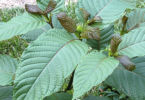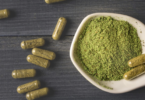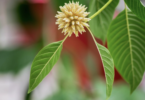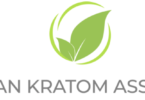http://blogs.sciencemag.org/pipeline/archives/2018/02/08/kratom-and-the-fda
Kratom and the FDA
The FDA has made an announcement about kratom, a plant preparation (Mitragyna speciosa) that (depending on who you ask) is a drug of abuse or a way for people to get off of other drugs of abuse. Specifically, it’s used as a way to mitigate opioid withdrawal symptoms, which is reason enough to wonder if it contains opioid ligands itself.
And that’s what the agency says is the case. The key part of their case, though, is not so much pharmacological as computational:
Notably, we recently conducted a novel scientific analysis using a computational model developed by agency scientists, which provided even stronger evidence of kratom compounds’ opioid properties. These kinds of models have become an advanced, common and reliable tool for understanding the behavior of drugs in the body.
Specifically, the FDA says that they’ve modeled the most common compounds found in kratom and determined that they have similar 3D pharmacophores to known opioid ligands, and they’ve done docking studies with the mu-opioid receptor, among others, that would predict potent bind constants. Now, that’s not the language the press release uses, of course – I’ve translated from the talk of “3-D computer technology” and the like. Trying to impress an experienced drug discovery researcher with talk of advanced 3-D modeling technology is futile, by the way – we’ve seen it work, we’ve seen it fail, we’ve seen several generations of the software, and we’ve seen people who know how to use it and people who flail it around like a spiked club.
So as an industrial medicinal chemist, I have some problems with the way the FDA is making its case here. It’s true that computational models of drug function have become more common, but “reliable” is a tricky word. If these things were truly reliable, to the point that you’d be comfortable setting government policy according to their results, then we folks in the drug industry wouldn’t have to physically screen so many new compounds in actual assays. But we do. Computational models can be useful, but that utility has to be checked against experiment every time to make sure that you’re on the right track, since the number of wrong tracks is basically infinite.
If you had “natural products pharmacology” as the next subject likely to make the news headlines, then, it’s time to collect your winnings. For people just coming to the subject, though, it’s important to get some background. Plants most certainly do have a lot of pharmacologically active substances in them, and these can have a huge range of effects (effects that are, as always, related to the dose of the substances themselves). There is no reason whatsoever to believe that a substance is more or less harmful because it comes from a plant or other natural source; such compounds range from vital nutrients to horrendous poisons. The only way to be sure is to study everything in detail.
What’s known about kratom and its components, then? Here’s a recent open-access paper that summarizes the situation. Kratom itself has been used for hundreds of years, at the very least, by people in the plant’s range as a mild stimulant and medicine, so it surely does have pharmacological effects. The most abundant natural product in the plant is called mitragynine, an indole alkaloid, and there are several closely related compounds as well. Among these, 7-hydroxymitragynine has received attention because (although a minor component) it may well be more pharmacologically active. As is often the case, analysis of these effects is complicated by the way the amounts of these alkaloids vary between samples – age of the plant, growing conditions and season, treatment of the harvested leaves, etc. all affect the profile. Some kratom samples, for example, don’t seem to have any of the 7-hydroxy alkaloid in them at all.
The paper referenced above finds that mitragynine is a partial agonist at the mu-opioid receptor and a competitive antagonist (micromolar affinity) at the kappa receptor. The other related alkaloids were basically inactive, except the 7-hydroxy, which is indeed a more potent, more efficacious partial agonist at mu (IC50 about 34 nM, tenfold better than mitragynine), as well as an antagonist at both kappa and (weakly) delta. The compounds are all characterized fully on the human receptors both functionally and by radioligand displacement for binding constants.
Now, that makes me wonder why the FDA is going on about their advanced modeling work on the kratom alkaloids, when there is already experimental evidence for whether they bind human opioid receptors. The agency’s press release does mention that “This model, together with previously available experimental data, confirmed that two of the top five most prevalent compounds (including mitragynine) are known to activate opioid receptors“, and this must the some of that previously available data. Needless to say, I believe that it’s much stronger evidence than a computational model, which is a view that would be shared by molecular modelers themselves. Well-controlled experimental data are the aces in the scientific deck.
There are more interesting details about the pharmacology of these alkaloids (specifically, the pathways that they activate once the bind to the receptors), but I’ll save those details for another day. The point is that yes, kratom’s active constituents do indeed act on opioid receptors – possibly in a way that would corroborate the reports of them being useful for helping with traditional opioid withdrawal, but that remains to be put to the test under controlled conditions as well. As you’d imagine, the evidence at the moment for that use is an interesting but totally mixed-up anecdotal stew, from which it would be hazardous to draw anything actionable.
It would appear, then, the the FDA is well within its purview to regulate kratom. We’ve sort of grandfathered in the coffee and tea plants, and the pharmacology of caffeine has been well worked out by now, but if you set up a business openly selling coca leaves or khat, you can expect a visit from the authorities as well. The same goes for kratom. Calling it an “herb” is meaningless; biomedically that’s not a real category in the way that people like to use it. Strychnine is an herb.
There’s a lot of commentary running around to the effect that “You can’t patent a plant, man, so the big drug companies are coming down on kratom“. The overlap of recreational drug use with expertise in patent law is small, though. The kratom alkaloids would appear to be perfectly legitimate starting points for a medicinal chemistry program, if you’re interested in differentiating opioid receptor effects (technically, the G-protein signaling versus the beta-arrestin pathway) and if you think that has medical promise. Leaving aside the various paths to patentability that exist already, the compounds that resulted from such an effort would most certainly be patentable if they have any utility at all. It won’t be easy – the syntheses of these things are longer than we like in this business, and CNS receptor pharmacology is not easy to unravel even on a good day. It may be that the whole hypothesis here is wrong, and that the reports of kratom’s use in opioid addiction have been enhanced by a strong placebo effect. I have no idea. But with enough time and money and effort, it’s definitely possible to find out.
It’s the FDA that’s coming down on kratom, and if you think those guys are there to carry water for us in the industry, we have some rueful counterexamples to show you. No, they’re there to regulate the sale of drugs, and kratom is a drug. Maybe it’s a useful drug, maybe it’s a harmful drug of abuse, maybe it can be either one depending on the circumstances. But a drug it most certainly is.







